Best aluminium road bikes ridden and rated
Lighter than steel, cheaper than any other frameset material - and now with ride-smoothing wide tyres - there's little wonder why aluminium bikes are surging in popularity
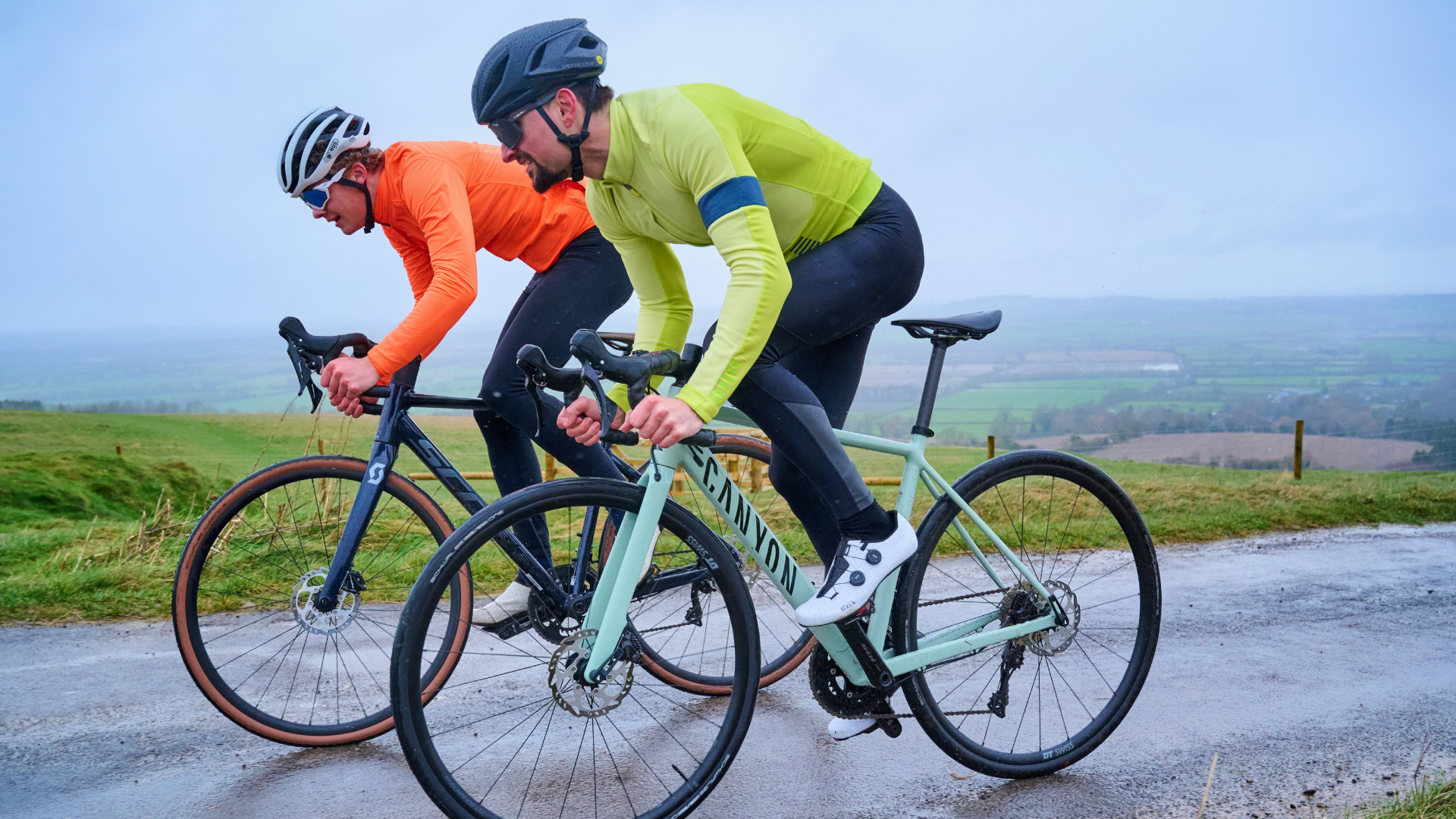

It was 1998 and under Marco Pantani that an aluminium bike (the Bianchi Mega Pro XL) last won the Tour de France. Since then, carbon fibre has ruled the roost at the pinnacle of the sport - and become an aspirational material that’s almost a byword for performance. From framesets to wheelsets, bottle cages to bar-end plugs, those resin soaked sheet have permeated through all of cycling.
But now, after a quarter of a century, we are seeing something of an epochal shift. As several factors have coalesced - and result has been the crystallisation of a new paradigm.
First, and most nebulous, there has been a growing appreciation of the cold ring of metal - it is real (as is steel) and it has a certain je ne sais quoi that the plastic sandwich of carbon simply lacks. More pressingly, you might not want to associate yourself with the carbon waste that comes with a carbon frame - aluminium, in stark contrast, has been claimed to be the most cost-effective material to recycle.
But perhaps most significant in these straightened times, you might simply not want to pay the premium for a carbon road bike. Yes, carbon can be imbued with excellent vibration dampening qualities - but with the shift to wider tyres, the comfort gap between carbon and alloy is now in many cases entirely imperceptible.
And yes, of course carbon framesets can be built lighter and the tubes sculpted into aerodynamically optimised shapes - but if you’re less concerned about marginal gains that the macro effect on your wallet, why wouldn’t you make the more economical choice when the differences are immaterial for your purposes?
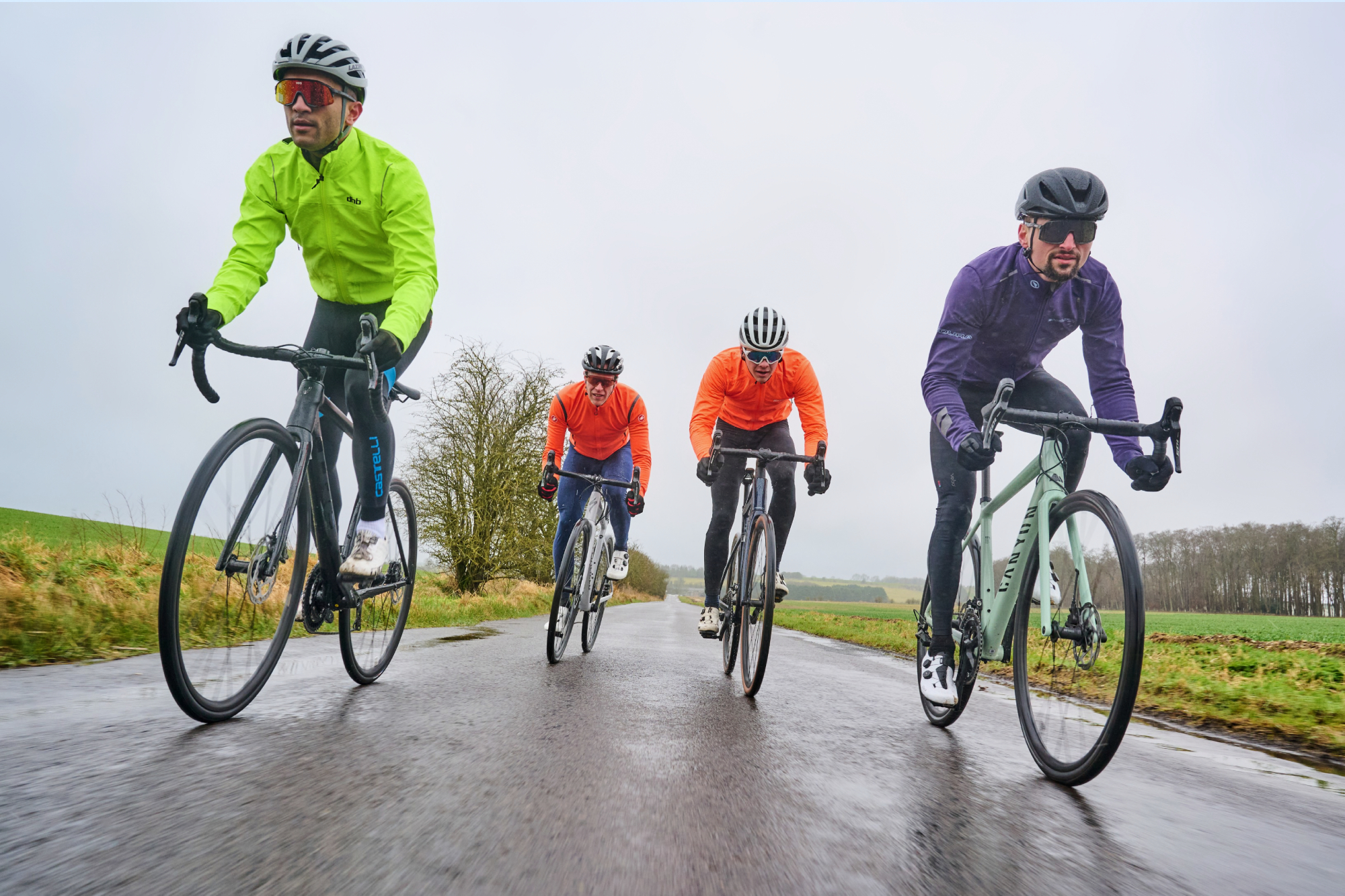
Ever more brands are responding to this increased consumer interest and giving their aluminium models a spot of care and attention - updating them for the latest developments in welding and construction, which often includes routing the cables neatly through the headtube (whether you want that or not!)
With this as the backdrop, we’ve taken four alloy bikes from Trek, Specialized, Canyon and Scott and pitched them head-to-head. To make the battle more interesting, we’ve chosen the competitive price point of $1,800 to $2,300 / £1,500 to £2,000 - aiming to stay as close to the centre of that bracket as possible. With the pressures of this price point, there is a particularly wide variance in the spec choices and decisions - giving plenty to dissect.
Beyond the big hitters of the groupset, wheels and geometry, we’ve taken a deep dive with a whole raft of considerations, including (but not limited to!) the tyre clearances, cable routing, welds, bottom bracket standards, mudguard compatibility and the size range - particularly how small they go.
I’ve been putting them to the test on the ‘challenging’ topography of Wales - taking in the full spectrum of brutally steep climbs and roads which with the passing seasons seem to be melting into trails. At the other end, I’ve balanced this with some fast, flat and buttery smooth lanes as well (yes, we do have those too!) Let’s see how they stack up.
Scott Speedster 10
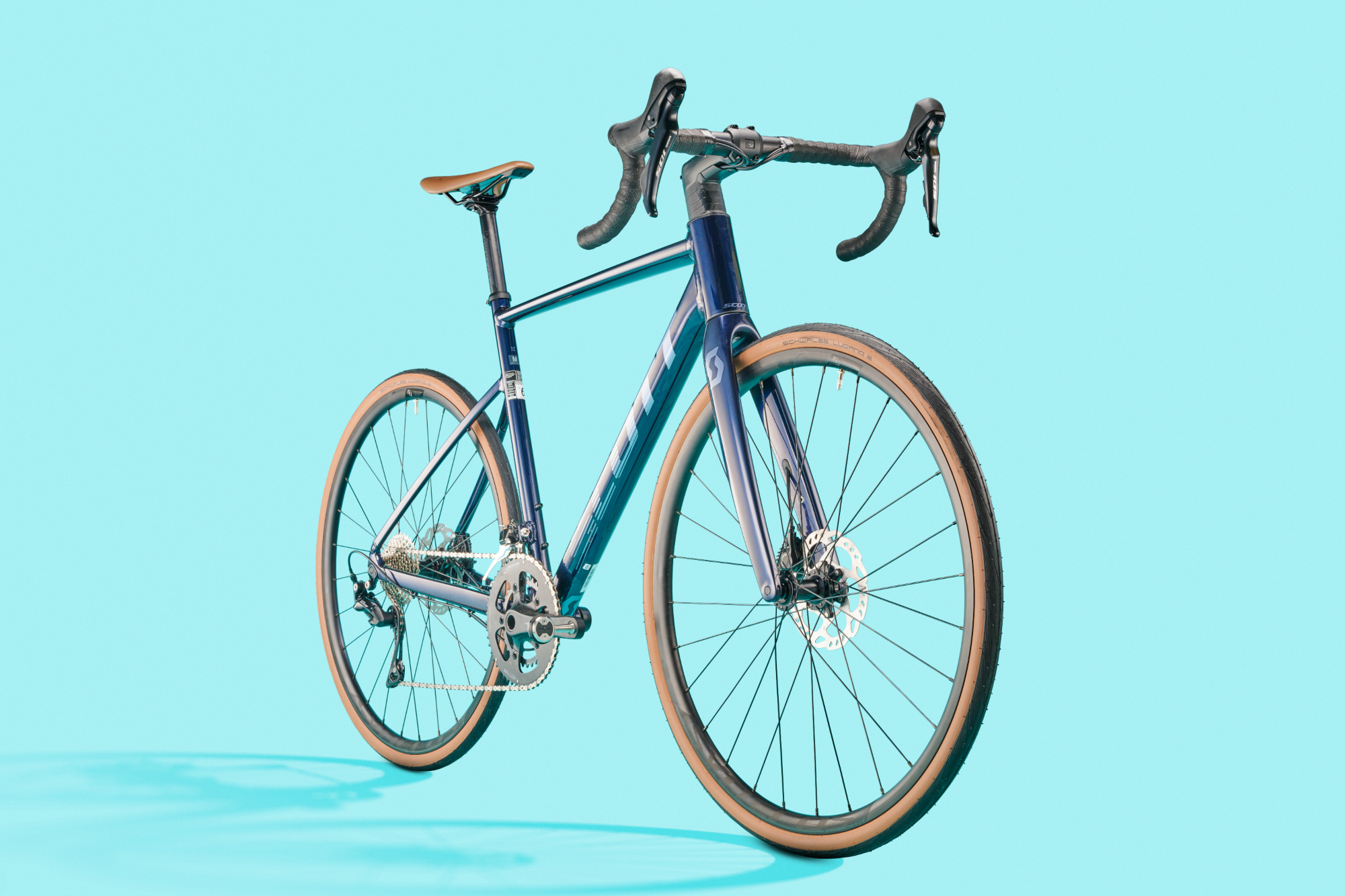
Scott Speedster 10
Our expert review:
Specifications
Reasons to buy
Reasons to avoid
First up, we have the Scott Speedster 10, boasting a clean aesthetic with its cables tucked neatly inside of its headtube. Together with its colour matched sidewalls and saddle, I think it’s actually the smartest looking of the bikes on test - though if you're a stickler for invisible welds, the Emonda ALR 5 or Canyon Endurace 7 would come out in front.
Starting with the frameset, the first I’ll mention is the fit. At 177cm, I’m supposed to be in the middle of the overlap between the size large and medium - but there is no way I’d have been able to ride the large and even the medium feels big.
With a stack height of 572mm, it’s the tallest bike on test - although not by much: it’s only by 3mm compared to the Allez Sport and 4mm compared to the Canyon Endurace. But you’d be wrong to assume off the back of this that the bike is an upright cruiser: the reach is also the longest on test, too.
In all, it’s about half a size bigger than what you’d expect a medium to be, so do bear that in mind - but it’s actually quite aggressive. The stack to reach ratio is the second most extreme on test, just behind that of the Trek Emonda ALR 5. In terms of its ride, it feels almost like an aero bike - planted, steady, great for hammering along in a straight line. Those same qualities make it excellent as an endurance bike, requiring very little input to keep it trucking on - just what you want when pushing the distance and your own endurance.
The Speedster 10 comes specced with Shimano 105 11-speed - a groupset which is time proven in its excellent blend between performance and price. Smooth shifts, powerful braking - although it has now been surpassed by 12-speed 105 (which elevates both those qualities still further), the 11-speed iteration is as good as it ever was.
It’s just a shame that a Praxis crankset has been swapped in as a cost saving measure, which does reduce the quality of the shifts at front. Considering that the Speedster 10 is the most expensive model on test at £1,899, that hit in the spec does sting a little more. (Although in the US, the Scott Speedster is only second most expensive, at $1,999.99.)
Coming to the hoops, Schwalbe’s Lugano tyres are wrapped around Syncros Race 24 Disc wheels. Although nominally 32mm, these don’t plump out as far as the Schwalbe One tyres on the DT Swiss Endurance LN rims of the Canyon Endurace. Aside from the size, though, the Luganos being a lower tier model simply aren’t as supple as a more expensive tyre - which doesn’t serve to help matters.
Even so, the combination stacks up well compared to the rest of the bikes on test: the Speedster’s ride is more comfortable than the Trek Emonda ALR 5 with its Bontrager R1 Hard-Case Lite, as well as the Specialized Allez Sport with its Specialized Roadsport tyres.
In all, it’s a solid bike with a great ride, but it just doesn’t hit the level of value offered by others on test, being more expensive and with lower tier components.
Specialized Allez Sport
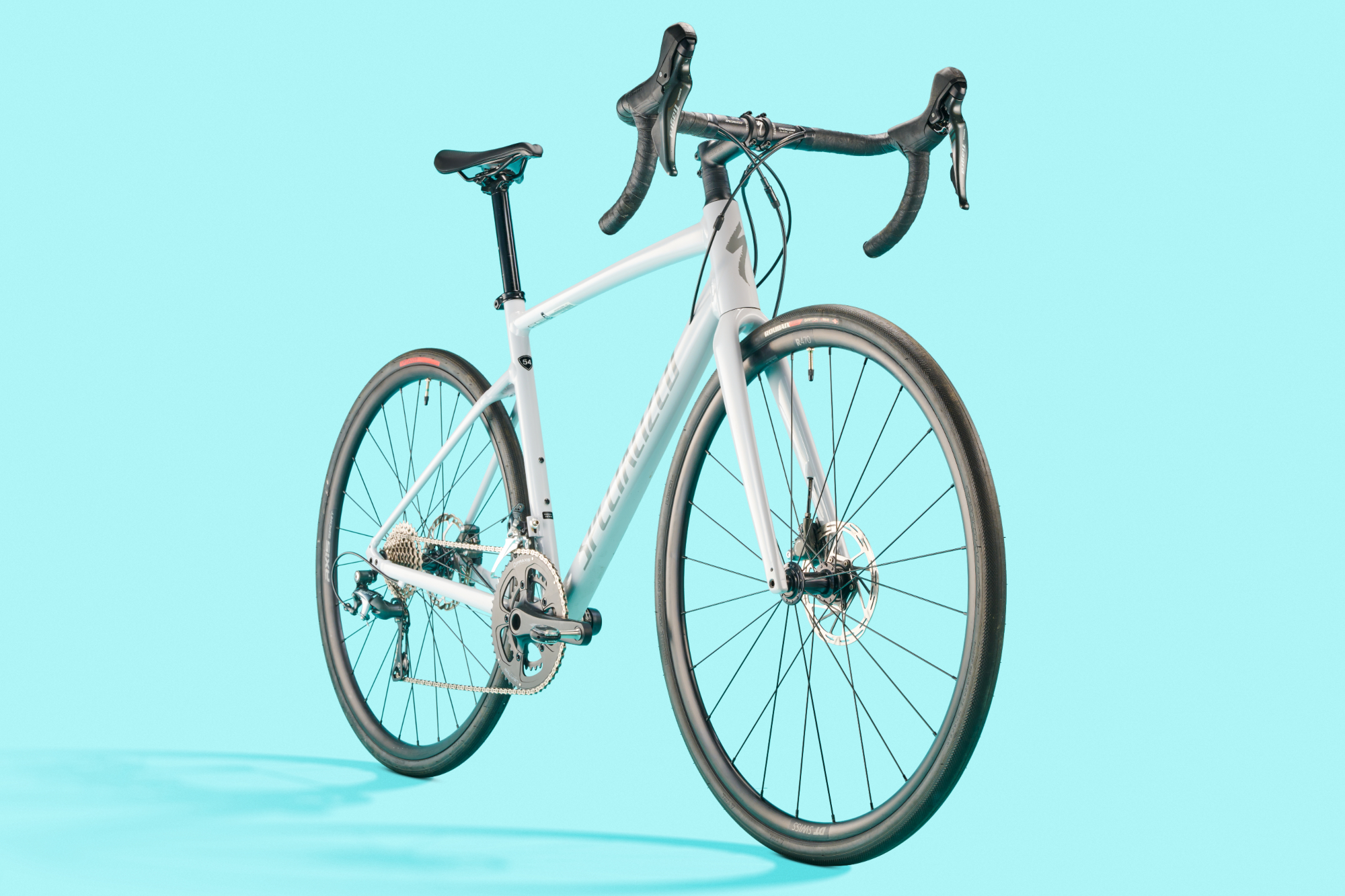
Specialized Allez Sport
Our expert review:
Specifications
Reasons to buy
Reasons to avoid
The Specialized Allez moniker has been associated with value oriented bikes ever since it first rolled onto the scene back in 1981 - although those initial bikes were actually all constructed from steel. It wasn’t until 1984 that the first aluminium Allez hit the market, which, quite pleasingly, makes this its 40-year anniversary.
The cable routing on the Allez Sport stands proud of the headtube and you’ll notice that - unlike the Canyon Endurace 7 and Trek Emonda ALR 5, though similar to the Scott Speedster - the welding on the Allez Sport is very much of the visible ilk.
It’s interesting to understand just why Specialized and Scott have this divergence from Canyon and Trek - and the answer is nestled in the broader context of their respective ranges.
In the case of the Trek Emonda and Canyon Endurace, their entry-level most basic models stand at $2,299.99 / £1,850 and $1,499 / £1,449, respectively. If you’re interested in either of these platforms, that’s the bare minimum you’ll have to pay.
The Allez Sport and Speedster 10, in contrast, are offered in builds going all the way down to $1,200 / £1,000 (or a buck under in the case of the Scott) making these models more accessible to a greater range of riders. But the consequence of that means some of the fancier flourishes on the framesets have to be forgone.
Regardless, the Allez Sport does well in terms of utility: it has mounts for full length mudguards, a threaded bottom bracket and generous tyre clearance for up to 35mm. But despite being the cheapest model on test at $1,800 / £1,600, the Allez Sport simply isn’t great for value.
It’s the only model on test with a 10-speed Tiagra drivetrain and - like on the Speedster 10 - a Praxis crankset is specced in place of Shimano. Given that the Canyon Endurace 7 offers 12-speed Shimano 105 (and matching crankset) for just £49 more, that is something which is hard to look past. In the US, that 12-speed Endurace isn't available, but at Canyon's 11-speed 105 Endurace 8 comes in at the same price as the Specialized Allez Sport, the point still stands.
Of course, Specialized, with its bricks and mortar shops, commands a premium over online retailers such as Canyon. Besides, like Apple, Specialized isn’t the brand you choose for its money-saving qualities.
Still, leaning into that, it would be nice if the Allez Sport was offered in a build with some higher spec components. As it is, $1,800 / £1,600 and Shimano Tiagra 10-speed is where the range tops out.
I think that’s a shame as the Allez Sport offers a really nice ride. It might be a temporally challenged mixed metaphor, but to describe the Allez Sport as a gravel bike designed for the road captures it pretty well. It has all that stability, comfort and control - but it doesn’t look like it's been on a crash diet when <35mm tyres are slotted into the frame. Good combo.
You might call that simply an ‘endurance’ bike, but with the effect that ultra-racing has had, you can argue that there are now two distinct flavours of ‘endurance’: one performance oriented, once comfort oriented. The Allez Sport nicely encapsulates the latter. It is a great frame for its intended purpose, it would just be nice if there was a slightly higher end build.
Trek Emonda ALR 5
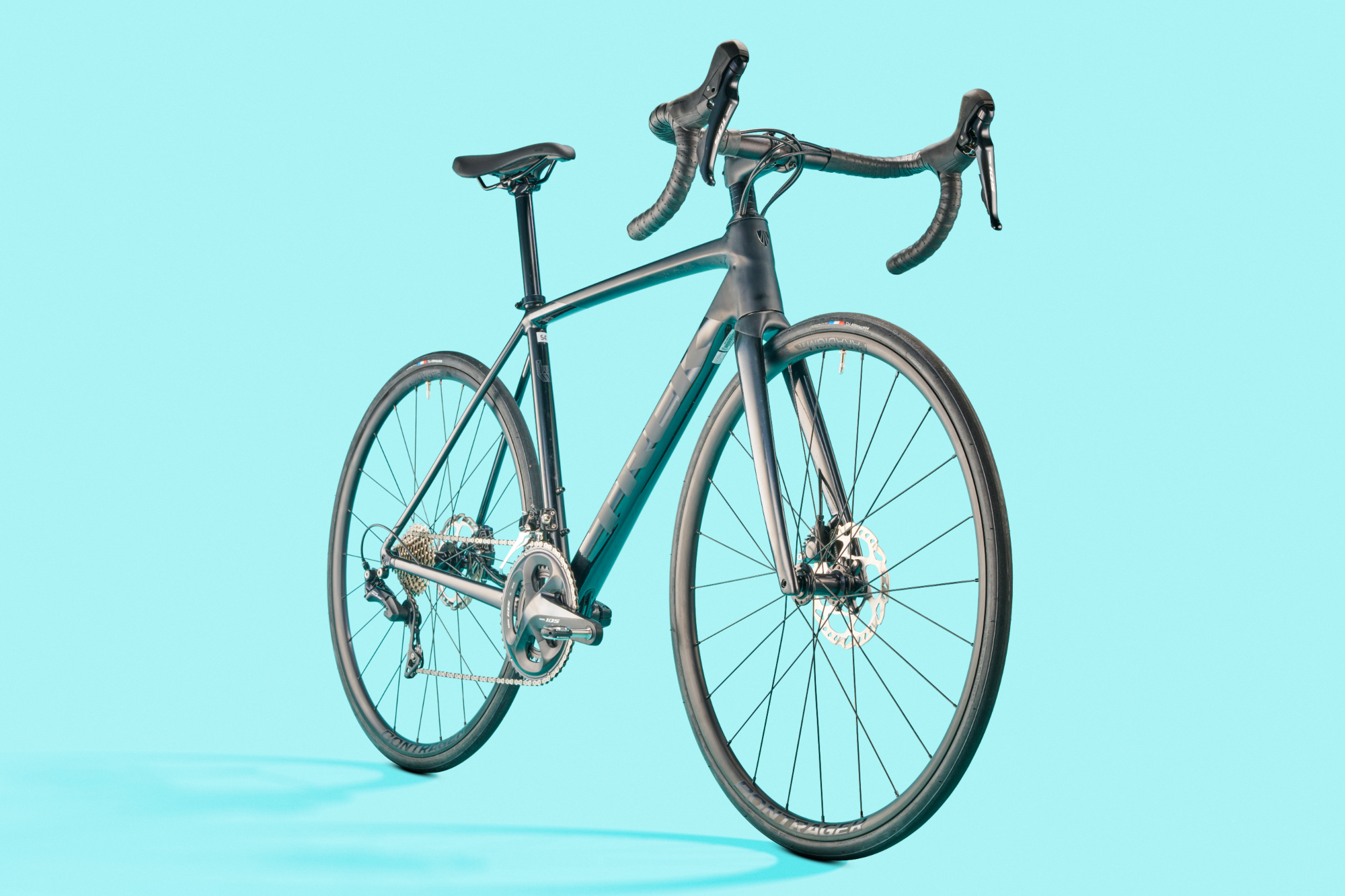
Trek Emonda ALR 5
Our expert review:
Specifications
Reasons to buy
Reasons to avoid
The Trek Emonda ALR 5 is quite a step change from the other three bikes on test. Whereas the other brands keep their racing geometry models locked on the painful side of $2,000 / £2,000, Trek offers its top-tier road racing geometry - ‘H1.5 geometry’, in the marque’s parlance - at a significantly more accessible price point.
I don’t fully understand why this is such a rarity. A bike’s geometry has the greatest impact by far on what sort of riding the bike is suitable for - pegging a premium on ‘performance’ geometry makes bike racing even more exclusive than it already is. You don’t expect different bike sizes to be different prices despite their very different geometries, so why should an aggressive geometry be so exclusive (for the most part) across the board?
Even so, despite the kudos for hitting this price point with that geometry, the Trek Emonda ALR 5 is still the second most expensive bike on test at £1,850 (or most expensive - in the US at $2,299.99). But on the flipside of that: at least you can see exactly where your money is going.
The groupset is full Shimano 105 - including the crankset and right down to the chain - and, as a result, the shifting is impeccable. Then there’s Trek’s ‘Invisible Weld Technology’, which is undeniably impressive. The frame looks so smooth and sleek it would be so easy to mistake it for carbon. As ever, it’s just the welds around the bottom bracket - or just a flick of the top tube - which betray its metallurgic pedigree. The cables are fully internally routed, too. In short, it absolutely looks the part of a race bike.
And it rides like a weapon. It’s got the steepest headangle, shortest wheelbase, and most aggressive stack and reach combo out of all those on test: it’s both longer and lower than the Canyon Endurace 7, for instance. The Emonda ALR 5 has a snap to it that is just such a pleasure to ride: a turn of acceleration on the climbs and lightening handling down the other side.
Some carbon bikes can be quite heavy with their electronic groupsets (especially Sram AXS Rival) and give something of a less inspiring, less direct feeling ride. The Trek Emonda ALR 5 is the antidote to that: (comparatively) cheap, cheerful, fun - probably slower in the wind tunnel, although with the amount of cash you’d have left over for wheels, you may well be able to put together a faster build than a stock carbon aero bike.
It’s perfect for a certain rider and style riding - and if that is you, you don’t have many other choices at this price point. But if you’re more ambivalent about the geometry, it's worth being aware that the tyre clearance is only 28mm - narrow even for a race bike these days. Probably not a surprise in the context, but there aren’t mudguard mounts either.
Then finally there’s the value/price consideration. The Emonda ALR 5 is £200 more than the Canyon Endurace 7 and you miss out on the 12-speed latest generation of Shimano 105 - which delivers a step change in terms of both the gearing and the braking. Although the Canyon Endurace 7 isn’t as aggressive, it’s still a lot of fun to ride. If you’re not planning on lining up at a start line, I think on balance you get more for your money with the Endurace 7. But if you are looking for a racer, look no further.
Canyon Endurace 7
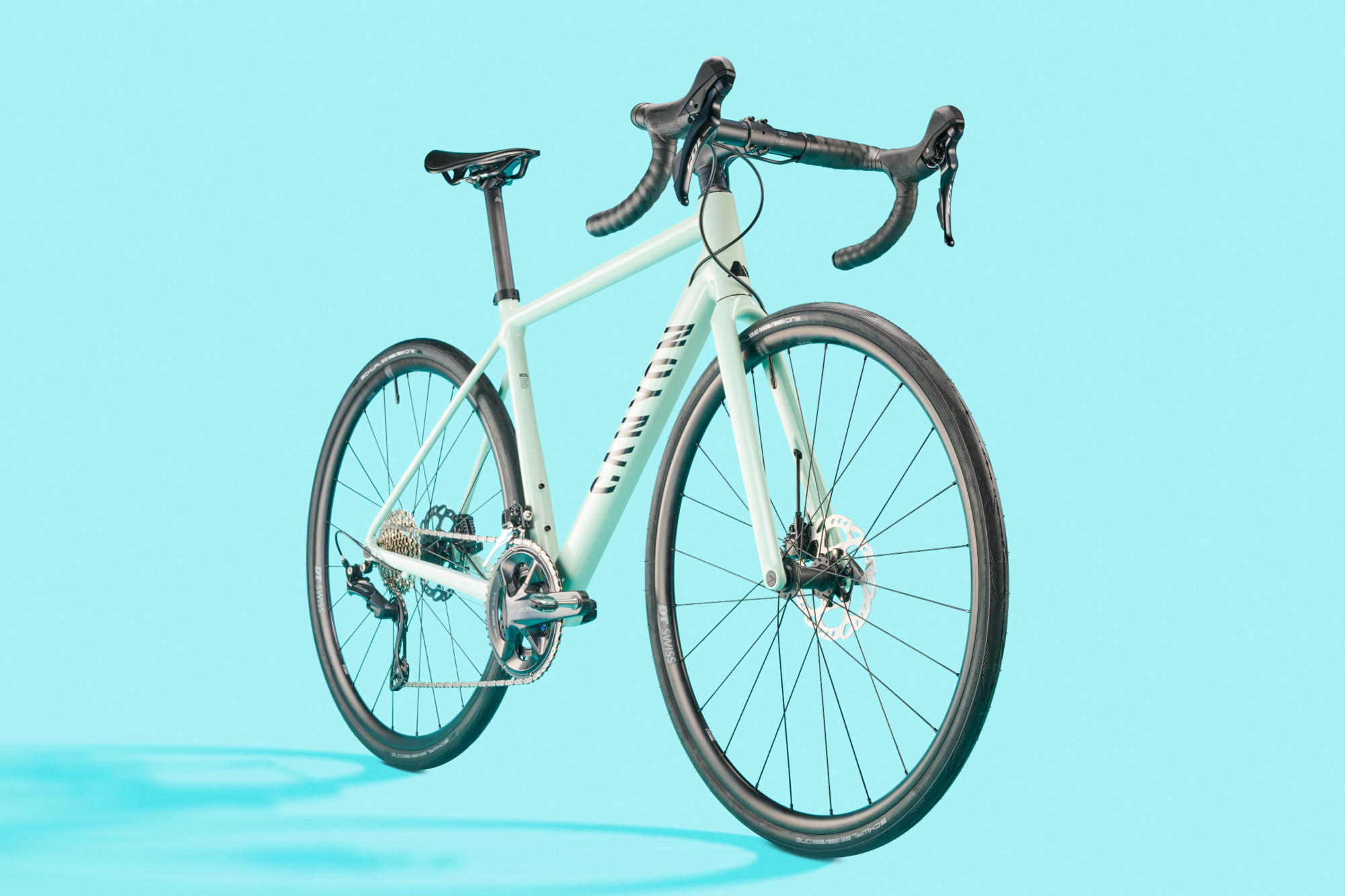
Canyon Endurace 7
Our expert review:
Specifications
Reasons to buy
Reasons to avoid
From the frameset to the wheel/tyre combo and the specced drivetrain, the Canyon Endurace 7 hits the mark across the board - and yet somehow still manages to come out with the second cheapest model on test. There’s one particular niggling snag, but I’ll leave that till the end.
Starting with the aesthetics of the frameset, the welds are (largely) as invisible as the Trek Emonda ALR 5’s, giving a similarly silky smooth sheen. The cables are exposed around the cockpit, which does detract from the clean lines (though some might prefer the cables being a little easier to get at).
You should also be aware that the bottom bracket is a press fit - but with the ‘thread fit’ Token bottom bracket specced, you just need two bottom bracket tools to unscrew it - no need to bring the hammer down on your frame. Personally, I wouldn’t count either of these points as an issue.
It’s no coincidence that this bike has both ‘endu-’ and ‘-race’ in its name. Although I wouldn’t pick it out for a crit as I would the Trek Emonda ALR 5, the Endurace 7 feels sportier than the Scott Speedster 10 or the Specialized Allez Sport: more amenable to quick line changes, accelerations - and generally more lively when swinging it out of the saddle on the climbs.
Given that the 32mm Schwalbe tyres plump up noticeably fatter than any of the models on test, this liveliness is an impressive, somewhat surprising, quality for the Endurace 7 to display - but somehow it manages it.
What wasn’t a surprise was the magic carpet-like feel over coarse A-roads - the sort which impart a bone-shaking rattle when ridden on 25mm tyres at classic pressures. The supreme comfort coupled with the seemingly limitless grip meant that I was able to blitz down roads strewn with detritus from the generous rainfall we’ve been having at a speed that belied the ‘endurance’ category supposedly defines this bike.
But the best thing is really the Shimano 105 2x12 groupset. The 11-36t cassette actually has the same number of single tooth jumps between the sprockets as the racer’s favourite 11-28t, when 11-speeds was as high as groupsets went. This allows for fine tube adjustments to your cadence when riding on the flat - but the great thing about the 105 12-speed cassette is that the jumps between the easiest gears have been made a little bigger, essentially giving an extra two gears at the low end, rather than a single one.
I think it’s absolutely the right balance across the cassette and the result is that you can stay in the big ring for so much longer. Whereas a 50x28 combination would have been egregiously cross-chaining in the past, you’re now two steps down from that extreme.
It meant I was able to sail up 10% gradients without having to move out of the big ring - essentially using it like a 1x drivetrain, whilst still having a bailout for the times you’re faced with a 20% wall - very much the best of both worlds.
Then there’s the braking. With the wider spacing between the rotor and the pads, I had fewer instances of that money-draining scraping sound when the grit is wearing down both your rotor and your pads. Plus setting the caliper position should be easier if you ever need to adjust that, and the location of the bleeding port has been improved to boot.
The only downside in my view is the lack of mudguards. It would be such a perfect year-round bike if it came with eyelets for a set of fenders. As it is you’ll either have to get by with strap-on full length mudguards - which are a level of faff beyond what mudguards usually are and still aren’t as good. Either that, or be resigned to the back of the group (though depending on your Christmas indulgences, that might not be such a bad thing!)
Verdict
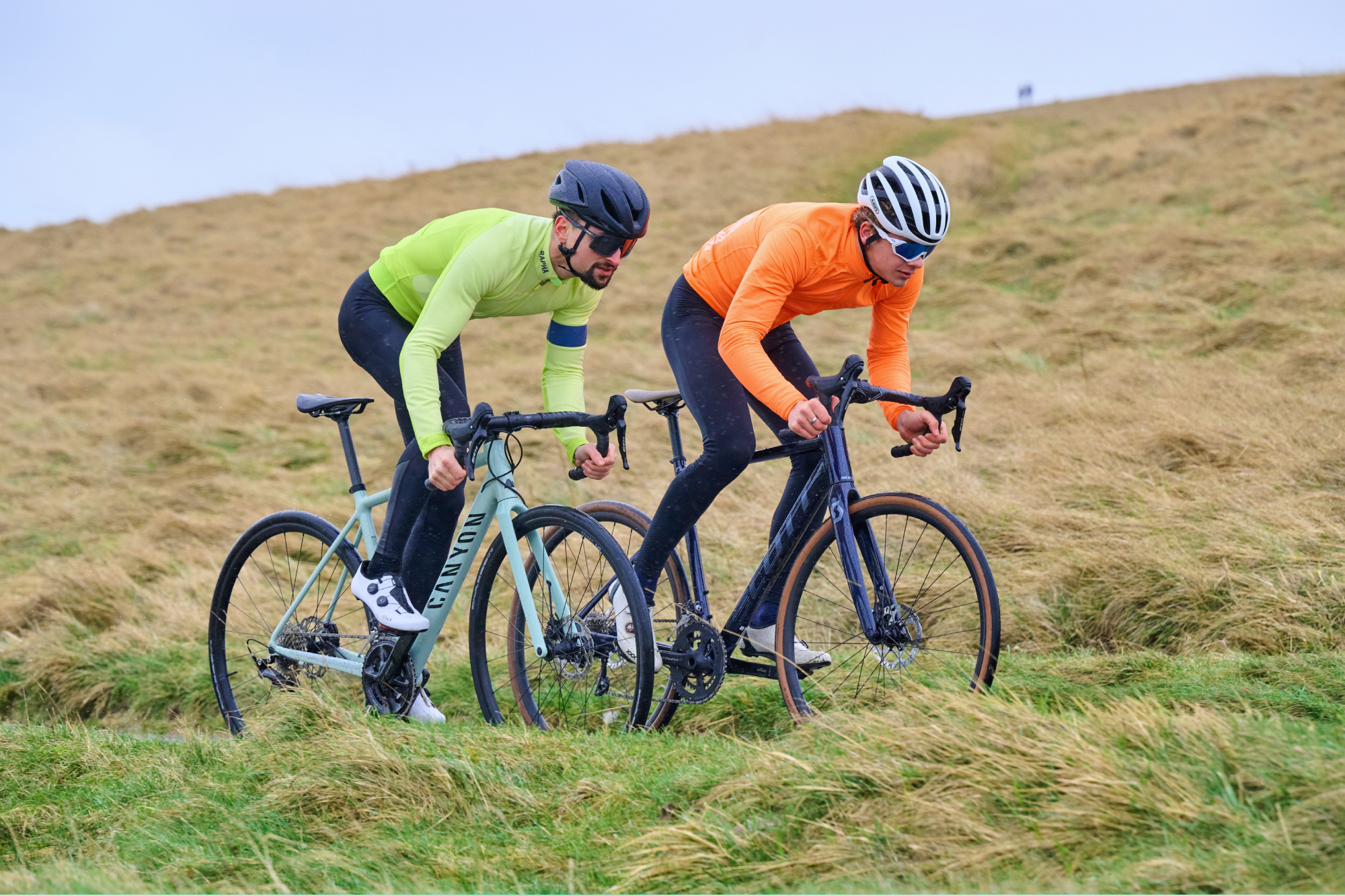
All of the bikes on test were great fun to ride - underlining the point that carbon very much is a ‘nice to have’ than a necessity. The level of components you get for the prices is generally great - and makes a much bigger difference to your ride than a few grams off the frame or a slightly more aerodynamically tube shape.
The old adage that you should invest in the frame and upgrade your spec over time has somewhat lost its strength - when the frames are as good as this and it’s possible to get a solid spec from the start, why not take advantage of that? In most cases, even investing in deep section carbon wheels wouldn’t even be out of place - with the resultant build likely be both faster and cheaper than the carbon equivalent.
But of the specifics, there are two quite clear stratifications: the bikes which can be built down to the £1,000 price point, and those which can’t. Specialized and Scott deserve to be commended for making their bikes more accessible. But the Allez Sport and Speedster 10 just don’t compete in terms of value - the Scott being too expensive for what you get, and the Specialized for not being expensive enough.
The Trek Emonda ALR 5 - although the second most expensive on test - does justify its price point. In contrast with the Allez Sport and Speedster 10, a full Shimano groupset is specced - which is a step change in terms of shifting performance. The Emonda has the cleanest looks with its invisible welds and internal cable routing - and it’s one of the very few bikes under $2,300 / £2,000 with a proper race geometry, which really shows. It is like lightning to ride, an awful lot of fun and absolutely the right tool for the job if you want to line up at the start line.
However, if you’re looking for a still sporty, but more comfortable ride - and to maximise value in terms of the spec, you can’t look past the Canyon Endurace 7. It somehow manages to feel more sprightly than either the Allez Sport and Speedster 10, whilst also accompanying that with the fattest tyres on test. It’s a magic carpet, super comfortable, and actually really responsive.
Throw in the Shimano 105 12 speed groupset and the deal is cinched. With so many gears and such a range, you (almost) always have the right one for your cadence - plus you barely need to shift out of the big ring. The redesigned calipers are excellent for both breaking and maintenance, too. Only £49 more than the Allez Sport (the cheapest bike on test) the value is outstanding.
Rim brakes...?

Rim brakes. That old tech. Haven’t they run out of road - like leather helmets, downtube shifters and toe clips and straps before them?
It would seem perhaps not.
Whilst it's true that the Canyon Endurace range only goes down to £1,449, the Canyon Endurace RB - a much less publicised platform which consists of just a single model - goes down to £1,299. And, of course, that RB stands for rim brake.
Why the excitement? Well, the Endurace RB comes equipped with full 11-speed Shimano 105 - crucially - including the calipers. If your only experience of rim brakes is from groupsets knocking on 20 years old or low-end equipment on the very most entry-level of bikes, it’s well worth giving these a try. In the dry and on aluminium rims, the performance is really very close to that of disc brakes - both in terms of outright power and modulation.
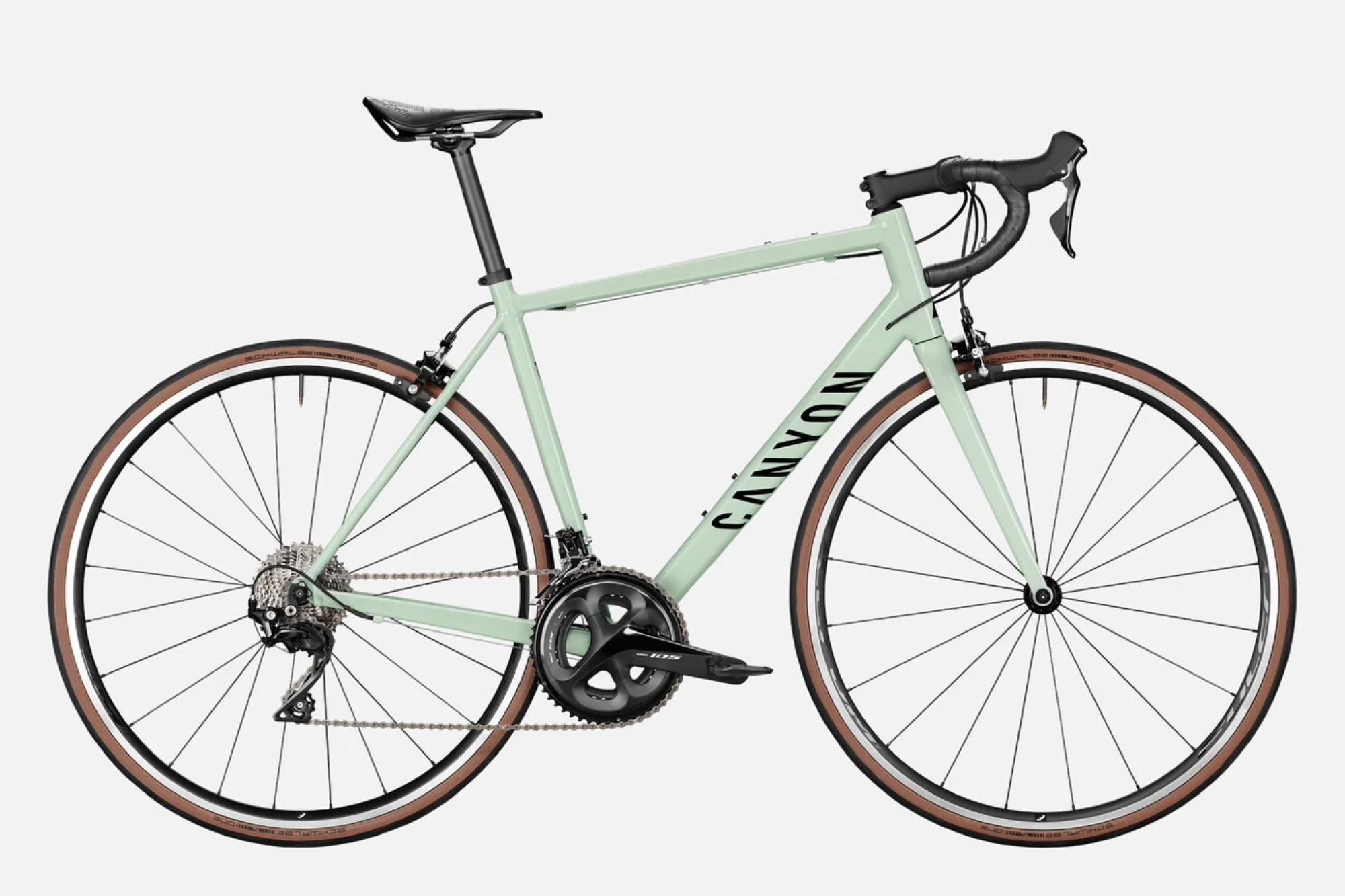
It’s fun to make a comparison with the Trek Domane, the American brand’s carbon endurance race bike. Decked out with the SRAM AXS Rival electronic/hydraulic groupset, it costs a whopping £4,625 and has a claimed weight of 8.89kg.
The Canyon Endurace RB, by contrast - and with its £1,299 price tag - is claimed to weigh 8.49kg.
If you self-identify as a fair weather rider (and with indoor training having utterly transformed in recent years, there’s now many more who do), it’s worth a strong consideration: with the shifting and braking being pretty much on a par - and the acceleration being that little better thanks to the lower weight - it goes toe-to-toe in many respects and it’s over 3.5 times cheaper.
The latest race content, interviews, features, reviews and expert buying guides, direct to your inbox!
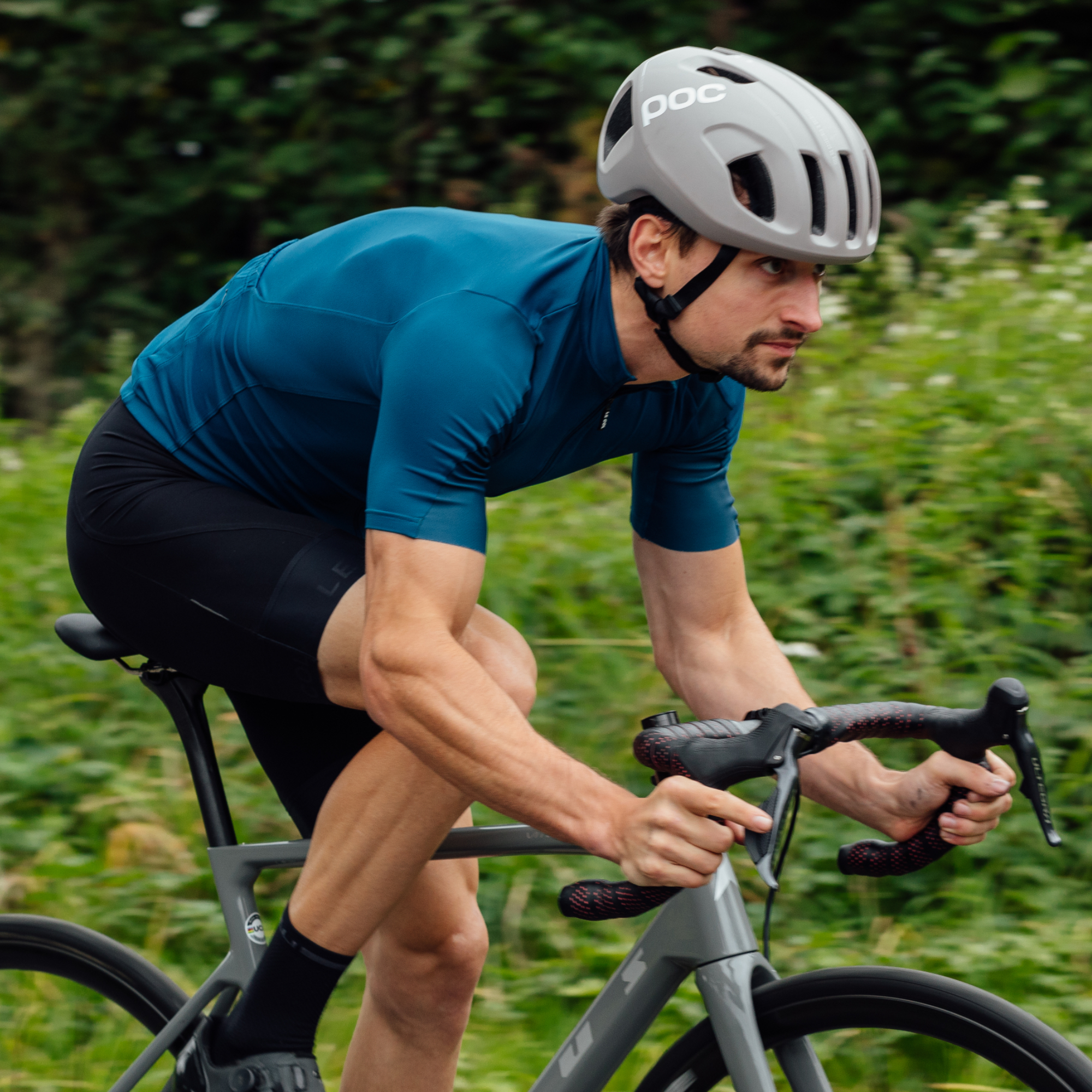
After winning the 2019 National Single-Speed Cross-Country Mountain Biking Championships and claiming the plushie unicorn (true story), Stefan swapped the flat-bars for drop-bars and has never looked back.
Since then, he’s earnt his 2ⁿᵈ cat racing licence in his first season racing as a third, completed the South Downs Double in under 20 hours and Everested in under 12.
But his favourite rides are multiday bikepacking trips, with all the huge amount of cycling tech and long days spent exploring new roads and trails - as well as histories and cultures. Most recently, he’s spent two weeks riding from Budapest into the mountains of Slovakia.
Height: 177cm
Weight: 67–69kg